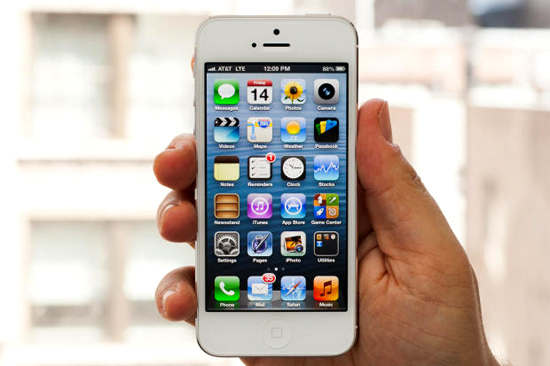As the world of app businesses continues to take the world by storm, many have come up short in their quest for success. On the other hand, some entrepreneurs have created successful apps that went on to make millions as seen in our last success story. With so much outdated and false information out there and the newly released iPhone 5, we thought it would make sense to ask 17 app developers to share their tips and insights on what it takes to develop a successful app.
#1 – Easy CDL Hazardous Materials Review by Devorah Fox
iTunes: http://itunes.apple.com/mt/app/easy-cdl-hazardous-materials/id558571064?mt=8
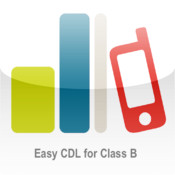 What does your app(s) do? We have seven apps with an eighth on the way. Four are iPhone apps, three are iPad apps. They are commercial driver license test preparation aids. They provide review material and sample test questions that are similar to those found on the state exams that applicants have to pass to get a CDL.
What does your app(s) do? We have seven apps with an eighth on the way. Four are iPhone apps, three are iPad apps. They are commercial driver license test preparation aids. They provide review material and sample test questions that are similar to those found on the state exams that applicants have to pass to get a CDL.
Did you build your app yourself or hire a developer? We worked with www.studybyapp.com. We developed the content –the text, graphics, audio and video–and the layout. They provided the development platform, i.e. the coding, and submitted to Apple.
Which revenue model did you choose to go with? These are educational apps. They do not have ads in them nor do they have in-app purchasing capability. The only source of revenue is sales of the app themselves. We like this revenue model because we feel advertising would distract from the learning experience. We have seen CDL test-prep apps that do have ads. User comments indicate that the users find the ads annoying so we feel we made the right choice.
What was the most difficult part of developing your app? Our first was the hardest. Once we had a good project workflow, we encountered few problems. Our apps all have an audio “lecture” component. Because of Apple’s constraints we were limited to 200 MB including the text, graphics, audio and video. Audio and video files are large so our scripts had to be really succinct.
What methods did you use to market your app? Both www.studybyapp.com and we use social networking. We publicize our apps to our contacts in the truck driver training industry and in trucking industry in general.
What is your single best tip for aspiring app developers? We very much enjoy working with www.studybyapp.com. Their development platform made the projects possible.
#2 – Smarty Shortz Apps by Jill Etesse
iTunes: http://itunes.apple.com/us/artist/smartyshortz-llc/id381010616
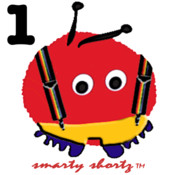 What does your app(s) do? I provided our developer link to all the apps for the iPad and iPhone we have now in the app store. The original app is Smarty 1st the most recent is Smarty Wings and Halo’s. Our apps average about 100 downloads/week, the summer months are slow, mainly because most of our apps are educational but also because of the app market in the summer in general. The apps generally start generating revenue from day one but it’s a constant maintenance to keep up the awareness of the app through marketing- this is the key here- maintenance and growing the one app into “related” other apps.
What does your app(s) do? I provided our developer link to all the apps for the iPad and iPhone we have now in the app store. The original app is Smarty 1st the most recent is Smarty Wings and Halo’s. Our apps average about 100 downloads/week, the summer months are slow, mainly because most of our apps are educational but also because of the app market in the summer in general. The apps generally start generating revenue from day one but it’s a constant maintenance to keep up the awareness of the app through marketing- this is the key here- maintenance and growing the one app into “related” other apps.
Did you build your app yourself or hire a developer? We built our first app ourselves- it took over a year and cost around 20K. We hired our own developers that now are part of our company.
Which revenue model did you choose to go with? Paid app. We do not use ads or in-app purchases, children and teachers are our main target audience.
What was the most difficult part of developing your app? Keeping up with iOS updates/changes- time consuming and set backs.
What methods did you use to market your app? Press Releases and social media outlets. Offer it for free for a day to get exposure.
What is your single best tip for aspiring app developers? Hire someone who does this for a living that can get you from Idea to App Store!
#3 – Pocket Pilot by Apps enFuego LLC
iTunes: http://itunes.apple.com/us/app/pocket-pilot-free/id550445864?mt=8#
 What does your app(s) do? Our app, Pocket Pilot, is a side-scrolling game where the user uses the gyroscope to fly a paper plane while dodging difficult and moving obstacles. The user can utilize a spit-ball machine gun or pencil rocket launcher to shoot down obstacles and increase their score. All the while, the walls start closing in on the user’s plane and the frequency of the obstacles speed up, creating an experience that gets the user on the edge of their seat. Since launching our app approximately 2 weeks ago, we have had about 900 downloads, with the first week over week growth at an increase of 13%.
What does your app(s) do? Our app, Pocket Pilot, is a side-scrolling game where the user uses the gyroscope to fly a paper plane while dodging difficult and moving obstacles. The user can utilize a spit-ball machine gun or pencil rocket launcher to shoot down obstacles and increase their score. All the while, the walls start closing in on the user’s plane and the frequency of the obstacles speed up, creating an experience that gets the user on the edge of their seat. Since launching our app approximately 2 weeks ago, we have had about 900 downloads, with the first week over week growth at an increase of 13%.
Did you build your app yourself or hire a developer? We sourced our developers from a firm in India. We worked with our development team over the course of 3 months of product design, animation, product development, demonstrations, extensive testing, giving feedback and retesting. The initial estimate ran to about $4800, with the final product costing more in the range of $6300.
Which revenue model did you choose to go with? We have begin to realize that the freemium model is an absolute must. It entices potential users by the masses into downloading the app for free, greatly increasing app ad revenue. From there, it is necessary to create an experience within the app so that they feel like they can’t live without the available in-app purchases to increase the revenue stream on the backend. From what we have noticed and from what I have learned from my developer friends, pay-for-app model is quickly dying unless you are an extremely well-established app development company.
What was the most difficult part of developing your app? Continually changing the scope of development to adapt to new trends in the app marketplace can be difficult but is very necessary.
What methods did you use to market your app? We decided to go the social media marketing route, sending out messages through Facebook and email to all of our contacts and giving them incentives to spread the word further. Additionally, we have spread the word through twitter by utilizing friends with large twitter followings.
What is your single best tip for aspiring app developers? Continually monitor the app store for ideas- there is no need to completely reinvent the wheel when you can improve upon what is already out there if you can be quick to market. The mobile industry is still largely on the rise, so there is plenty of demand out there.
#4 – Torklift Central by Matt Lynch
iTunes: http://itunes.apple.com/us/app/torklift-central-towing-app/id413315720?mt=8
 What does your app(s) do? The Torklift Central Towing App allows us to provide a higher level of customer service to our guests. With the App we provide GPS directions to our facility, phone numbers, email, twitter, Facebook, etc. The main purpose of the app is to give any one of our guests worldwide access to towing ratings from 1979 to the current year. Which is unheard of to have this amount of information all in one place at your finger tips. Within our towing ratings, we also provide Dhingy towing ratings as well. So not only are we providing additional ways for our guests to contact us, but we are also providing access to the entire world with the towing ratings. Buying a new car? Want to know the true tow rating or if it really is dhingy towable? You’re just a tap away.
What does your app(s) do? The Torklift Central Towing App allows us to provide a higher level of customer service to our guests. With the App we provide GPS directions to our facility, phone numbers, email, twitter, Facebook, etc. The main purpose of the app is to give any one of our guests worldwide access to towing ratings from 1979 to the current year. Which is unheard of to have this amount of information all in one place at your finger tips. Within our towing ratings, we also provide Dhingy towing ratings as well. So not only are we providing additional ways for our guests to contact us, but we are also providing access to the entire world with the towing ratings. Buying a new car? Want to know the true tow rating or if it really is dhingy towable? You’re just a tap away.
Did you build your app yourself or hire a developer? We built our app. The time frame to develop was around a month. I developed the app myself. I learned how to use Xcode, Eclipse. With learning these programs, google really is your best friend. There is a wealth of information on the net and its easy to just search away and find the answer.
Which revenue model did you choose to go with? Free. We wanted to allow anyone of our guests and partners to be able to have access to the information for free. We are looking forward in the future to creating a new paid version of the app with extra features. We will still continue to offer the free version.
What was the most difficult part of developing your app? The learning curve. With learning how to develop the app. Apple changes the IOS every year with new features and extras. The hardware changes as well. With the new iPhone with a taller screen, we will be adding that feature to allow the app to take full advantage of the retina display.
What methods did you use to market your app? We marketed our app on our own website, organically through Google, marketing forms, etc. Our strategies to get more awareness are to promote it within car dealerships. The one thing that car dealerships have is the tow ratings for all new cars. Most of the time they can give you all of the answers to the new cars, but what about used? Thats where the dealers benefit most from our app. They have the historical data in the palm of their hands and at the touch of a finger.
What is your single best tip for aspiring app developers? It is hard at first. Don’t give up. Stick with it. The moment you see your app go live in the iTunes/app store you feel such a sense of accomplishment. Its worth it. You’re now on a worldwide level.
#5 – Voices by David Ciccarelli
iTunes: http://itunes.apple.com/us/app/voices.com/id493554377?ls=1&mt=8
 What does your app(s) do? Voices.com is the online marketplace that connects voice-over talent with brands that need their stories told. Organizations such as NBC, Micosoft, Sony, Nintendo and 85,000 others use Voices.com to search for, audition and hire voice-over talents for everything from commercials to phone system recordings, YouTube video narrations and video game characters. We’ve recently launched an iPhone app and followed that up with an iPad app. The Voices.com app now gives you visibility of your entire account no matter where you are.
What does your app(s) do? Voices.com is the online marketplace that connects voice-over talent with brands that need their stories told. Organizations such as NBC, Micosoft, Sony, Nintendo and 85,000 others use Voices.com to search for, audition and hire voice-over talents for everything from commercials to phone system recordings, YouTube video narrations and video game characters. We’ve recently launched an iPhone app and followed that up with an iPad app. The Voices.com app now gives you visibility of your entire account no matter where you are.
• Tap into a global network of more than 25,000 professional voice over talents. Search by keyword, gender, language, location and specialty.
• View profiles, check out feedback ratings and reviews and listen to audio samples
• Post jobs publicly and review responses remotely. Be notified in real-time as new responses roll in.
• Listen to auditions right from your iPhone, iPod Touch or iPad.
• Award the job and send payment to get your project moving forward.
• Communicate by internal messages and make sure your project is completed on time and within your budget.
Did you build your app yourself or hire a developer? We built the app in house. The iPhone app took four months and the iPad app another three months. In both cases, about 1 month was dedicated to the design and fine-tuning the Photoshop mock-ups.
Which revenue model did you choose to go with? We offer in-app purchases such as giving voice talent the options to upgrade from a free account to a Premium account which is either $39.95/month or $299.00/year.
What was the most difficult part of developing your app? The most difficult part was creating an audio recording and audio editing feature. With the Voices.com iPhone app, voice talent can record auditions of scripts that are sent to them by clients. The audition is often only 30-60 seconds and that file is then sent to the client’s account at Voices.com along with a brief proposal and quote for the work. On the iPad app we added the ability to not only record a sample of your voice, but to edit the audio file too.
What methods did you use to market your app? Since we already had a community of nearly 250,000 members, we had quite a head start. We did create a landing page where those who wanted to be the first to download the app could sign-up for a “Launch Day Email Alert.” We had about 5000 people on the list and many downloaded the app the first day. Also on launch day, we ran ads on Google Adwords, we issued a media release and we emailed the rest of our mailing list announcing the app. Fortunately, we were able to get on the New & Notable list for the first week which drove another few thousand downloads.
What is your single best tip for aspiring app developers? Before coding, start with a flow chart of exactly what your app will do. We used a program called MindNode which made this process fun. Next, about 25% of our time was spent on the design. We ran through several iterations before we got the look that we were going for. Lastly, run a beta test. If you can get the UDIDs from a group of beta testers (friends, family or potential customers) you can send them a pre-release version of the app. That’s right, you simply email them the .ipa file and they can start using the app on their iPhone or iPad before it gets distributed in the AppStore. Feedback from your beta testers will provide you with valuable insights into what’s working and what isn’t. Go through another round of fixes and send one last version for review by your beta testers. If they give you the thumbs up, then submit to the AppStore. In short, don’t rush your launch. You only get one chance!
#6 – Trendslide by Jeffrey Vocell
iTunes: http://itunes.apple.com/us/app/trendslide/id513174632?mt=8
 What does your app(s) do? Trendslide is an app for executives and sr. leadership at online businesses to get their key business information from anywhere, and at anytime. Once executives leave their desk, or close their laptop they lose sight of how their company is performing on key metrics – Trendslide not only enables them with consistent access to their business information, but proactively provides alerts for metrics that need some attention.
What does your app(s) do? Trendslide is an app for executives and sr. leadership at online businesses to get their key business information from anywhere, and at anytime. Once executives leave their desk, or close their laptop they lose sight of how their company is performing on key metrics – Trendslide not only enables them with consistent access to their business information, but proactively provides alerts for metrics that need some attention.
Did you build your app yourself or hire a developer? We built our app internally. Trendslide is a team of two people, and Ben Petrin is our lead developer and has done the architecture and development for Trendslide. It took us about 3 months to build our app and get it into the Apple App Store, but part of that time was strictly working nights and weekends.
Which revenue model did you choose to go with? Trendslide is free to download, and use for up to 3 trends. For example, if you download the Trendslide app and want to see your web analytics you simply enter your username and password for Google Analytics and then you can turn on metrics such as Visitors, Page Views, Unique Visitors, Goals, and more. For four or more trends we chose in-app purchases as a revenue model for Trendslide, because it is a recurring service where you are consistently able to get your business analytics from. Many of the services we integrate with are “paid” models, or have some component of a paid version such as Chargify, Shopify, and others.
What was the most difficult part of developing your app? I’m not sure there is any most difficult aspect that we’ve run into, however I would say that app developers (especially iOS developers) really have to pay attention to detail. Internally at Trendslide we read Apple’s design guidelines 3 or 4 times and tried to ensure we adhered to as much of it as possible before submitting to the app store. Because of this we we’re approved on our first try, but have spoken with many other developers that have run into issues.
What methods did you use to market your app? Given our target users we have to get in front of them where they visit online, so we strive to participate in the discussions on forums, websites, blogs and other outposts where they are already visiting and have some checkout the Trendslide app. App review sites, and directories can also be really helpful. Depending on your type of app look at some services you are integrating with to see if they have an app gallery or links to apps that integrate – this can help drive traffic and downloads for you.
What is your single best tip for aspiring app developers? Design your app for not only right now, but the future use cases as well and then test each of the use cases with users. User feedback is crucial, and before shipping any new app or updated version to the app store you should always have a group of users (ideally some of which are in your target market) that use the app and provide feedback.
#7 – Rhythmatic by Bryson Alef
iTunes: http://itunes.apple.com/us/app/rhythmatic/id421478337?mt=8
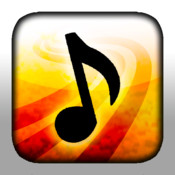 What does your app(s) do? The app I linked to above, Rhythmatic, is a music game that creates a playable tap track to songs in the user’s library (with a play style similar to that of Tap Tap Revenge). To date it has been downloaded over 300,000 times (the majority of which came during a FreeAppADay campaign we launched in summer of 2011). Another (more recent) notable app we have developed, MarketShark, is a stocks analysis tool that supplies in-depth information (via hundreds of datapoints) about various stocks. It was released in the summer of 2012 and has registered several hundred sales since then.
What does your app(s) do? The app I linked to above, Rhythmatic, is a music game that creates a playable tap track to songs in the user’s library (with a play style similar to that of Tap Tap Revenge). To date it has been downloaded over 300,000 times (the majority of which came during a FreeAppADay campaign we launched in summer of 2011). Another (more recent) notable app we have developed, MarketShark, is a stocks analysis tool that supplies in-depth information (via hundreds of datapoints) about various stocks. It was released in the summer of 2012 and has registered several hundred sales since then.
Did you build your app yourself or hire a developer? All the apps we have made were built in-house. The first several game apps we released cost us only our time. We generally released one app per year (with the exception of Rhythmatic taking around a year and then another year of improvements). We spent some money on a FreeAppADay campaign for Rhythmatic which resulted in a massive jump in downloads and subsequently in revenue. For MarketShark we went all out on both PR and advertising. In retrospect, we learned a lot but that campaign was generally a negative one.
Which revenue model did you choose to go with? We have tried most revenue models (covering ads, paid, and in-app purchases) and have found that paid generally works best for us. For our next app we plan to release within the coming months we may attempt the “freemium” structure to see how well it does. A lot of what we do is still us just learning about the industry and trying to advance our knowledge both of coding and of the system.
What was the most difficult part of developing your app? I would say the most difficult aspect I’ve encountered thus far is simply the time commitment. When working on a large project (especially with only a couple of developers) both large bugs and feature additions will take up exorbitant amounts of time and effort (although I believe this makes developing worth it in the long run).
What methods did you use to market your app? For our first few apps, we didn’t do any marketing at all. Rhythmatic was really the first app where we tried out the waters of advertising and it really paid off (via FreeAppADay). For MarketShark, we hired a PR firm as well as an advertising agency. In retrospect, we likely won’t be doing that again.
What is your single best tip for aspiring app developers? My best tip actually is to find and befriend a good graphic artist. Relatively, the code is easy. I was extremely lucky that my good high school friend and now business partner is an amazing graphic artist. I am completely convinced that without that side of our teamwork there is no way we would have made it as far as we have.
#8 – iJuror by Scott Falbo
iTunes: http://itunes.apple.com/us/app/ijuror/id372486285?mt=8
 What does your app(s) do? iJuror is the top rated iPad app for juror selection. It is used by attorneys all across the U.S. and has been downloaded thousands of time since 2010.
What does your app(s) do? iJuror is the top rated iPad app for juror selection. It is used by attorneys all across the U.S. and has been downloaded thousands of time since 2010.
Did you build your app yourself or hire a developer? I did all of the app development myself in about 3 months. I have a computer science and programming background so that made it easy to learn app development.
Which revenue model did you choose to go with? The paid revenue model fits my app development business. Legal professionals are willing to purchase apps that help make their jobs easier so this revenue model is well suited to my app business.
What was the most difficult part of developing your app? With the volume of apps in the app store I’ve found that marketing and app discovery are the most difficult aspects of the business.
What methods did you use to market your app? I reached out to online and traditional media outlets that write about legal technology. I offered an evaluation copy of iJuror for them to freely review and usually the reviews were positive. I believe that developing a quality app helps in this strategy as well.
What is your single best tip for aspiring app developers? Listen to what your users need and deliver a quality product. It will make it much easier to market your app and become a leader in your target market.
#9 – SimplyTweet by Hwee-Boon Yar
iTunes: http://itunes.apple.com/us/app/simplytweet-3-for-twitter/id364574174?mt=8
 What does your app(s) do? SimplyTweet is a Twitter app combining powerful functionality and ease of use. It has been featured by Apple, as well as ranked no. 1 in Japan as well as top 20 in the US app stores.
What does your app(s) do? SimplyTweet is a Twitter app combining powerful functionality and ease of use. It has been featured by Apple, as well as ranked no. 1 in Japan as well as top 20 in the US app stores.
Did you build your app yourself or hire a developer? It was built by myself, alone. It took about 2 months for the first version, followed by frequent, often huge updates at least once a month for 2 years, adding new features, adapting as the Twitter API grows.
Which revenue model did you choose to go with? Paid apps. It is more obvious to customers how much they are really paying, even if it might look more expensive upfront, rather than a free app that requires one or more in-app purchases to get good functionality.
What was the most difficult part of developing your app? As a developer with almost a decade experience developing different types of software, the technical aspects of app development was not a huge challenge. Getting the word out about the app and supporting a huge number of users in an effective manner as an indie developer is challenging.
What methods did you use to market your app? Submitting apps to review sites, introducing it other people I know online, paid apps and building a webpage for the app.
What is your single best tip for aspiring app developers? Think about how you can market the app outside the app store before you write a single line of code.
#10 – Home Inventory by Diane Hamilton
iTunes: http://itunes.apple.com/us/app/home-inventory/id413564952?mt=12
 What does your app(s) do? Home Inventory (plus free iOS companion apps Home Inventory Photo Remote and Home Inventory Mobile Backup). Home Inventory provides a quick, easy, and accurate means to document and organize everything that’s important to you. Whether that be the contents of your home or your collection of obscure bobble-head dolls, Home Inventory allows you to easily capture important information, categorize and store for safekeeping and reference.
What does your app(s) do? Home Inventory (plus free iOS companion apps Home Inventory Photo Remote and Home Inventory Mobile Backup). Home Inventory provides a quick, easy, and accurate means to document and organize everything that’s important to you. Whether that be the contents of your home or your collection of obscure bobble-head dolls, Home Inventory allows you to easily capture important information, categorize and store for safekeeping and reference.
Did you build your app yourself or hire a developer? We are a husband/wife team. My husband develops all our apps. The cost to us is time. The current version of Home Inventory was a rewrite and took about 9 months of nights and weekends (while holding down full-time jobs for someone else). The iOS companion apps took on average 4 weeks. Adam Learns Shapes and Colors for the iPad was a side project spanning about 6 months.
Which revenue model did you choose to go with? Our preferred model is paid however with some of the nuances of the app stores, this will need to change moving forward. For instance, there is no mechanism to charge for upgrades, and there is the race to the bottom on pricing; these are things that a purely ‘paid’ model make it difficult to sustain a business with especially for robust Mac apps that require serious development time and resources. We chose a ‘paid’ model originally because it fit our existing sales channel prior to the opening of the Mac App Store. After the opening of the Mac App Store, we were hesitant to use ads and in-app purchases because we knew from being app users ourselves they can be annoying if not implemented well. We would like the user experience to be as unobtrusive as possible.
What was the most difficult part of developing your app? The loss of control and uncertainty. We develop apps for Apple platforms. Just like any of the other platform app stores, there are many rules and requirements that must be followed in order to get your app approved and released. This is often a moving target and even ambiguous and the time it takes to get your app through the approval process is entirely unpredictable.
What methods did you use to market your app? Our goal has been to leverage the largest channels possible while experimenting with smaller ones. Our largest channel is Apple through the Mac App Store and App Store for iTunes and even though Apple keeps a percentage of every sale, it is well worth it to get in front of so many potential buyers. We have had double digit growth since the opening of the Mac App Store in Jan of 2011. We strive to make quality products that are useful and well liked so that they get noticed by our customers who can then tell others through word of mouth and positive app store reviews. We are thrilled that Apple has featured Home Inventory in the Mac App Store as New & Noteworthy, What’s Hot, and Staff Favorite as well as Get Stuff Done, Apps for Productive People and New Year, New You.
What is your single best tip for aspiring app developers? Never let money be your main goal.
#11 – eMobo by Derek Vasconi
iTunes: http://itunes.apple.com/us/app/emobo/id509968854?ls=1&mt=8
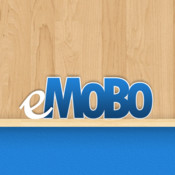 What does your app(s) do? Our app is called eMobo. It’s based on the idea of cell phone novels and making the idea of reading and writing novels popular on the phone. The idea stems from the popular Japanese “Keitai Shousetsu” tradition, one that is such a huge hit with Japanese audiences in 2011, three of the top 5 best selling novels in Japan were these Cell Phone Novels!
What does your app(s) do? Our app is called eMobo. It’s based on the idea of cell phone novels and making the idea of reading and writing novels popular on the phone. The idea stems from the popular Japanese “Keitai Shousetsu” tradition, one that is such a huge hit with Japanese audiences in 2011, three of the top 5 best selling novels in Japan were these Cell Phone Novels!
In terms of downloads, our app has about 5,000 downloads since being launched in late May of 2012. We have users from all over the world, the majority of them being based in the United States. Our reviews have almost all been positive, and we have seen users actually using the app over 10,000 times since it was released, which we think is a great number. The app also has been featured and discussed on several app websites, including the popular website givemeapps.com (Link: http://www.youtube.com/watch?v=UwVWKhSAazQ). In terms of revenue, we haven’t seen much yet due to it still being in an infant stage with advertising, although we did release a 1.5 version in the summer which implemented an achievement-based revenue in conjunction with the company Kiip (http://www.kiip.me). The idea is to gain achievements based on milestones in the app, such as if you read one book or write one book. You would get a notification saying you won something and when you put your email in the notification query to redeem the reward, a voucher is sent to your email address and we get paid money for the reward being sent to the email (it doesn’t actually have to be used). The rewards range from free food coupons at fast food restaurants to 25$ gift card from amazon to even a free xbox 360! It just all depends on how high of a level of achievement you would earn. Of course, we get paid more money as well, depending on how valuable the achievement is. In terms of revenue earned from this system, we have only seen about 11-20 reward redemptions so far, but we JUST put Kiip into our app a few weeks ago. So we hope to see it become profitable over the years to come. Also, we don’t have an Android version yet but we are currently seeking to make a version for the android very soon and may consider to make that a paid app version instead of free.
Did you build your app yourself or hire a developer? I hired a developer who has come on board and we have worked together to create and design the app from scratch. I found the developer on Craigslist. He works at the University of Pitt and does app coding on the side. It took about a year to make the app and over $15,000 to make.
Which revenue model did you choose to go with? I explained before in the general description that our preferred model of revenue so far is through the Kiip ad implementation. I do have ads set up through iad as well but they have not generated much more than a few pennies in revenue. In my opinion, they are mostly background material for our users and generally ignored much like you would ignore Google ads. We wanted something more engaging so with Kiip, the user is actually striving to earn the rewards through the app achievements we’ve set in place and because of this, the revenue comes to us in a way where everyone benefits. The user gets free stuff and we get paid for the user getting that free stuff, so it’s a win/win for all. I would like in the future to consider in-app purchases, possibly making the app a paid app for the iPhone community as well as the Android community once we have eMobo made for the android, but I really think where we will get our most revenue will be from private ads placed on individual story downloading pages within the app. There is such a huge market for private companies here to use, depending on the association of whatever the companies are pitching to users of our app. For example, if you are a vanity publisher, putting an ad on anyone of our story downloading pages makes sense because we have alot of authors who use our app to write their own stories. So we are hoping to see enough of an interest from private companies to buy ad space on our app since it is targeted niche marketing 101 to do so and I think these companies would see results right away from the ads within our app.
What was the most difficult part of developing your app? Perhaps the most difficult app is the marketing. We spent a huge portion of our budget just making the app. The app is a monster…it does so much and is so complex of an app in terms of how it operates, what it’s operating, and so on, that we haven’t been able to really aggressively market the app in the way we would like to have seen it marketed. We feel this is the hardest and truly the most frustrating component to making any app is getting people to care. eMobo is such a revolutionary app and there is virtually a zero barrier to entry with the app being so unique as it is, we would hope that alone would draw users to it, but obviously it hasn’t become viral or a necessary app for anyone at this time. It’s hard as a developer and a creator to see an app you’ve made get lost in the mass amount of apps being made when it’s actually something useful, yet other apps that are simple and pointless get all the glory. It doesn’t take much to know those apps spent all their money on the marketing, not on the concept.
What methods did you use to market your app? Well, so far, it’s been mostly applying to review sites, getting social media types to talk about the app, and we’ve now hired a publicist to help as well with exposure. We feel that it’s completely necessary to lay out a pragmatic marketing strategy even before making the app, since the app needs to hit the ground running the moment it’s released. It’s important to stay at the marketing game and never stop with it, as eventually you’ll see results. We believe that and this is why we haven’t stopped trying every route possible to talk about the app and get eMobo the exposure it deserves. I would say another important strategy would also be to set aside a decent amount in your budget for targeting popular app websites to talk about the app and possibly do commercials and other real world physical advertising. People who make apps probably think it’s ok to just advertise online and that’s not the case at all. Make a great commercial and get that out there, whether it’s through tv, print, radio, or all of these, and then follow up with those commercial runs on all the social media sites. We are hoping to implement this approach next in our advertising for the app in 2012/2013.
What is your single best tip for aspiring app developers? Believe in your app. I know it sounds cheezy to say this but you have to really know in your heart that the app you have made is worth checking out and then take that belief and put it behind every single interview, ad, social media post, and discussion you will ever have about the app. It’s been a supremely strong factor in our run so far with eMobo. I personally don’t think I could continue with this app if it weren’t for the fact that I know in my heart of hearts it’s special and offers people who use it a third way to enjoy books (besides the traditional physical books and the modern ebooks). Cell phone novels are an entirely NEW idea in America and most of the world for that matter. I believe that we will be one of the first apps and companies to really put out the word about this amazing new idea of reading and writing books if you are constantly on the go and don’t have time to sit down and try to read a 500 page book! So believing is truly necessary for your app to survive.
#12 – Word Derby by Diane Hamilton
iTunes: Coming soon…
![]() What does your app(s) do? It’s an asynchronous word game called Word Derby. The game pits two to four players against each other in a word battle. Each player earns points by building words in order to move their Derby character down the race track. The first to the finish line wins.
What does your app(s) do? It’s an asynchronous word game called Word Derby. The game pits two to four players against each other in a word battle. Each player earns points by building words in order to move their Derby character down the race track. The first to the finish line wins.
Did you build your app yourself or hire a developer? We have three in-house developers who are employees of Mention Mobile. While we cannot say how much it cost to build Word Derby we can say that it is a six digit figure. The entire game took about 10 months to build. Our developers come from various backgrounds including other gaming companies and graduate programs of Los Angeles based colleges.
Which revenue model did you choose to go with? We feel that a freemium model with ads and in-app purchases with an option to upgrade to a paid version of an app without ads is best. We chose this model because it gives users a variety of payment choices while still giving them the full game experience. Users can play a completely free version against users who spend $5 a week on the game. This model gives us multiple opportunities to generate revenue while giving the user the freedom to choose how he/she spends on our game.
What was the most difficult part of developing your app? The server side development of a turn based game and setting it up to scale properly proved most difficult. Any mobile game or app that requires a robust server side component with many pieces of data flowing through it is complicated to build.
What methods did you use to market your app? Our biggest decision we made with Word Derby was to partner with a big publisher. After we had a prototype of the game built, we sought a publishing deal from a big player in the mobile gaming space in order to get a larger base for exposure. The biggest problem small developers face is gaining exposure in the app store. With a greater number of developers putting out more games each day, it’s getting much tougher than it used to be to put out a game without a big name behind it or a massive marketing budget. The best strategy to get visibility is to build a great product that Apple or Google loves and get featured on one of the app stores. It’s not the easiest thing to achieve but it’s doable.
What is your single best tip for aspiring app developers? “I have the most amazing app idea.” I’ve heard this line many times and while many people believe it’s true, I have seen this thought bring many people to waste thousands of dollars by having an app built in a hurry and just launching it in the app store blindly hoping they have a big hit and score a big payday. It simply doesn’t work that way. The problem is, many aspiring app developers do not know what it takes to build, promote, and sustain a quality mobile game or application. Just because you have a good idea does not mean you can hire an offshore team to build it, launch it in the app store and become a millionaire. That is now a myth. My advice is, if you have a great app idea, score a meeting with a successful app developer to talk to them about how to plan for success in this crazy space with hundreds of thousands of competitors. Take the necessary time developing your idea in order to make it a quality app. Never rush into spending money to build an app just because you think it’s a good idea. Always do your homework first.
#13 – Golf Joust by Diane Hamilton
iTunes: http://itunes.apple.com/au/app/golf-joust/id515904681?mt=8
 What does your app(s) do? Golf Joust is a score-keeping and stat tracking app for golfers currently in open beta for version 1.0 and 1.1. The future of the app will put the best golf deals and head to head competition in the palm of users hands via their iPhone or Android smartphone. Golf Joust entered the App Store and Google Play in April 2012.
What does your app(s) do? Golf Joust is a score-keeping and stat tracking app for golfers currently in open beta for version 1.0 and 1.1. The future of the app will put the best golf deals and head to head competition in the palm of users hands via their iPhone or Android smartphone. Golf Joust entered the App Store and Google Play in April 2012.
Did you build your app yourself or hire a developer? We used a combination of both internal development and outsourced joint venture partners. Locally, we tapped into Auburn University students and globally, we worked with partners in Eastern Europe and India.
Which revenue model did you choose to go with? We’re building in several revenue sources for future versions of Golf Joust. It will remain a free download for golfers with some upcoming “pay to play” features. There is a B2B component for golf courses to feature their course and deals in front of targeted golfers. Instead of traditional paid advertising in the form of banners and popups, Golf Joust will offer golf related industries the opportunity to sponsor players similar to how they would a player on a professional tour. We’ve got a well diversified revenue stream planned.
What was the most difficult part of developing your app? Combining the offshore partners with internal developers. Ideally, we’d have one or the other but not both. However, offshore partners – the correct ones – allow for so much more work because their price point is so competitive.
What methods did you use to market your app? For our open beta, we really focused on local events (within 100 miles). We did engage with a few individuals in locations who have helped recruit other beta testers and players local to them. We developed a very active and engaged base of users from Arizona to Florida to Indiana – and amassed almost 2,500 golf courses for them to test everything out on.
What is your single best tip for aspiring app developers? Be thinking of how you’re going to market and grow your audience while you’re developing the app. Get as much feedback as possible and use that to shape the versions you develop.
#14 – Timbre by Matt Bridges
iTunes: http://itunes.apple.com/us/app/timbre/id533493750
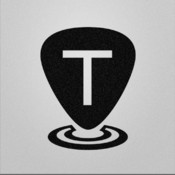 What does your app(s) do? Timbre is a live music discovery app for the iPhone designed to introduce users to new artists and bands. Timbre’s minimalist concert calendar displays nearby shows, and connects listeners to the artists’ music via iTunes. This allows music lovers to listen, become fans and buy tickets on-the-spot. Released in the app store only a few weeks ago, Timbre has already been featured in Apple’s “New and Noteworthy” category, and has gotten tens of thousands of downloads.
What does your app(s) do? Timbre is a live music discovery app for the iPhone designed to introduce users to new artists and bands. Timbre’s minimalist concert calendar displays nearby shows, and connects listeners to the artists’ music via iTunes. This allows music lovers to listen, become fans and buy tickets on-the-spot. Released in the app store only a few weeks ago, Timbre has already been featured in Apple’s “New and Noteworthy” category, and has gotten tens of thousands of downloads.
Did you build your app yourself or hire a developer? We built Timbre ourselves. It began as an entry in the May 2012 Boston Innovation Challenge hackathon, and we finished the initial version over the course of a couple weeks. We got a great response and ended up winning the hackathon, so we spent the next few months refining the concept, and it was released to the app store on September 7.
Which revenue model did you choose to go with? Timbre is a free app, mostly because the audience for free apps is significantly larger than the audience for paid apps. My day job is with Intrepid Pursuits, where we do contract mobile development for Boston-area clients. With the positive reviews Timbre has gotten, it has been an invaluable portfolio piece for us. Timbre also has a large social component, and it’s important not to limit your audience when trying to build a critical mass to leverage the network effects of social media
What was the most difficult part of developing your app? The “walled garden” approach to app distribution has added some logistical hurdles when planning releases. Launching a product is difficult by itself, but it is even more so when changes to live code must go through a 1-2 week approval process. On the technical side, offline usage is much more prevalent with mobile, and data synchronization strategies are notoriously tricky to implement.
What methods did you use to market your app? We’re using a multi-faceted marketing approach, heavy on the “free” aspects of marketing – although those things take time. We started by reaching out to our community of family, friends and connections, letting them know the app was available for download. By working with a local PR firm, we secured some major press coverage, great reviews in TechCrunch, Evolver.fm and New York Times, among others. We’ve also been using social media.
What is your single best tip for aspiring app developers? Simplify the user experience as much as possible. As developers we tend to like a lot of choices and customization. However, removing choices and lowering the barrier of entry to your app goes a long way toward adoption and positive first impressions. We had a huge list of possible feature additions to Timbre, but we had to constantly remind ourselves that the core experience of the app was tapping a concert and hearing music; new features which made that even slightly more confusing or difficult were cut.
#15 – Break the Ice! by Justin Luedeke
iTunes: http://itunes.apple.com/us/app/id483330981?mt=8
 What does your app(s) do? Break the Ice! is a geosocial networking app that helps users instantly meet real people nearby. Our app was initially released in a Beta format in Spring 2012. For a few months we collected user feedback and then spent the summer making updates to the app before relaunching in early September 2012. Since our relaunch, we have seen quite an uptick in downloads each week.
What does your app(s) do? Break the Ice! is a geosocial networking app that helps users instantly meet real people nearby. Our app was initially released in a Beta format in Spring 2012. For a few months we collected user feedback and then spent the summer making updates to the app before relaunching in early September 2012. Since our relaunch, we have seen quite an uptick in downloads each week.
Did you build your app yourself or hire a developer? We interviewed about 10 developers before deciding on one. Knowing our app would be very complex, we wanted to ensure we did our due diligence to find a quality company. We wrote all the detailed requirements, chose all the designs and color schemes and then worked hand and hand with the developer, having nearly daily reviews of progress. We also completed our own testing throughout. From start to initial Beta release was about 12 months. We then spent an additional few months reviewing user feedback and making updates to the app before relaunching in early September 2012. As we are privately funded, we are unable to disclose the total cost at this time. However, you can expect a high cost with a complex app.
Which revenue model did you choose to go with? At this point in time, we are focused on user growth. Our eventual revenue model is in-app purchases. We have created high quality upgrades that enhance the user experience.
What was the most difficult part of developing your app? Length of time to perfect the app. We just wanted to get the app out for our users to begin enjoying but at the same time we needed to ensure the functionality was working exactly as it should. User experience is key for app growth.
What methods did you use to market your app? We have run numerous mobile banner ad campaigns as well as a larger initiative through Chicago Transit Authority. We have seen a direct increase in downloads during these campaigns. We have begun discussion with a few app review websites to have our app featured.
What is your single best tip for aspiring app developers? Quality should be your top priority. With the number of available apps continuing to increase daily, the high quality apps will be the ones that stand out above the rest.
#16 – Color Wisdom Cards by Tori Hartman
iTunes: http://itunes.apple.com/us/app/color-wisdom-cards-by-tori/id554065818?mt=8
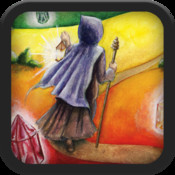 What does your app(s) do? Our App is Color Wisdom Cards by Tori Hartman and it’s an Oracle Deck (similar to Tarot) that offers multiple types of card readings for users. It’s brand new and it’s our very first venture into App production.
What does your app(s) do? Our App is Color Wisdom Cards by Tori Hartman and it’s an Oracle Deck (similar to Tarot) that offers multiple types of card readings for users. It’s brand new and it’s our very first venture into App production.
Did you build your app yourself or hire a developer? Our app wouldn’t exist without Twitter; that’s where I met my developer. Jesse approached me and I found out they were a startup, just like I was. That really appealed to me, because they were eager to prove what they could do. My card deck has been fairly successful online but it never occurred to me to do an App. Jesse and his crew at Plebian Apps won me over and we partnered. I helped them with the product and they developed the App.
Which revenue model did you choose to go with? Since this is a new world, to me, it originally didn’t occur to me to run ads for it. We have not yet started promoting it and even so sales (albeit modest ones) have begun, without us doing anything yet. Our thinking is to primarily begin with my followers on Twitter, Facebook, and my newsletters, and see where that takes us.
What was the most difficult part of developing your app? To be perfectly honest, there have been very few challenges in this process for me. The only difficulty is that we’ve had to put it out there before it’s perfected, so that we can find the “bugs.” Of course, this runs the risk of bad reviews. I find that to be the only big challenge so far.
What methods did you use to market your app? My App developer wanted nothing to do with marketing, which actually is great for me, believe it or not. In its very nature, developing an App requires a personality that is not necessarily ideal for marketing. One of our biggest challenges was getting them to understand the discounts we might have to run in order to really promote it – but in the end the strategy was accepted by all.
What is your single best tip for aspiring app developers? Make sure you build into your percentages something for a marketing person. Also, make sure that whatever project you do, it has a person behind it who has an audience or who has marketing experience. The best advice I can give is to really be prepared to market your product and don’t be afraid to approach somebody just because they’re famous.
#17 – ooTunes Radio by Steve Woolley
iTunes: http://itunes.apple.com/app/ootunes-radio-recording-alarm/id302782364?mt=8
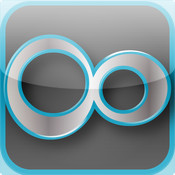 What does your app(s) do? ooTunes Radio is an app which allows listening to and recording from tens of thousands of terrestrial (AM / FM) and internet radio stations. It’s been downloaded over 200,000 times with gross sales of almost $900,000. It’s been a huge hit in Italy, Canada and the United Kingdom, and a minor hit amongst visually impaired users due to it’s “accessibility”.
What does your app(s) do? ooTunes Radio is an app which allows listening to and recording from tens of thousands of terrestrial (AM / FM) and internet radio stations. It’s been downloaded over 200,000 times with gross sales of almost $900,000. It’s been a huge hit in Italy, Canada and the United Kingdom, and a minor hit amongst visually impaired users due to it’s “accessibility”.
Did you build your app yourself or hire a developer? I built it. It took around 2 months of my spare time while a PhD student. Cost was about $100, as I already had a mac, and an iPod touch just needed to sign on as an App Developer.
Which revenue model did you choose to go with? Paid. Because it’s the only way to assure that I get paid for my work :-) A majority of my work is supporting customers and maintaining/curating the radio database. More customers (especially non-paying customers) means more work with (in the case of free) minimal revenue.
What was the most difficult part of developing your app? Finding continuing revenue sources. A one time sale is in some ways like a Ponzi. Without new customers, I can’t pay the bills.
What methods did you use to market your app? Mainly word of mouth. I make customers happy, they tell more people who make more customers. ooTunes was picked by a UK based tech TV program as a “top 5 app” (#2 I believe). I had thousands of downloads within minutes. How did they find it? A happy customer recommended it to them, and they liked it as well.
What is your single best tip for aspiring app developers? Listen to your customers. If they say something sucks, it probably does.
#17 – Well by Arin Sarkissian
iTunes: http://itunes.apple.com/us/app/well/id526164927?ls=1&mt=8
 What does your app(s) do? Well is an app that effectively bridges the gap between your social graph and to do lists. Well just launched in August 2012. So far we have seen close to 100K downloads.
What does your app(s) do? Well is an app that effectively bridges the gap between your social graph and to do lists. Well just launched in August 2012. So far we have seen close to 100K downloads.
Did you build your app yourself or hire a developer? We built the app in-house with our own staff. Our developers are all people I had worked with in the past or had cultivated a personal relationship with. The app took approximately 7 months to develop; this includes the iOS code, design assets & the backend API & infrastructure.
Which revenue model did you choose to go with? Our revenue model will be advertising based. The data in our application is rich with our user’s purchase intent. For example: a “My Trip to New York” list contains many monetization opportunities; air fair, hotel deals etc. This model will also enhance our users’ satisfaction & increase the utility of the application; not only do you get to enjoy sharing your lists & todos but by doing so you save time & money by having deals you want come to you.
What was the most difficult part of developing your app? iOS & it’s app ecosystem sets a very high bar as far as usability and user interface are concerned. Making sure to build a beautiful, usable and performant app all at once was quite a challenge.
What methods did you use to market your app? Our app’s social aspects allow us to utilize viral hooks in order to increase our applications visibility. Apple has featured our app as well which gave us a huge jump start that we’re still enjoying. We’ll be experimenting with social media advertising and other user acquisition strategies soon.
What is your single best tip for aspiring app developers? Build an app you wish existed. Also – build a team that does a great job at working together towards a shared goal.
